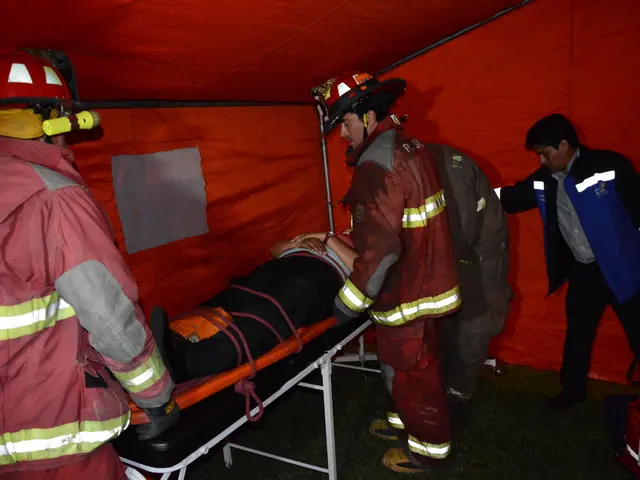California carries a long-overdue risk of a substantial earthquake, but newer scientific perspectives could be challenging our conventional understanding of its occurrence.
The Mw7.7 Mandalay earthquake, which struck Myanmar in March 2025, has shaken up the world of seismology. The catastrophic event, which caused thousands of deaths, injuries, and disappearances, occurred along an unusually long stretch of the Sagaing Fault, specifically a 510-kilometer (317-mile) section that had not broken for almost 200 years.
The Mandalay quake marked the longest continental rupture ever documented and exceeded expectations by releasing more strain than anticipated. This has significant implications for earthquake prediction models, particularly those focused on the San Andreas Fault in California.
Current models estimate earthquake probabilities over fixed timespans without factoring in the evolving fault state. However, the Mandalay earthquake underscores the need for more realistic, time-dependent forecasts. This requires models that consider not just the historical record, but also the timing, location, and amount of prior slip.
Physics-based models provide an alternative approach with the advantage that they could, in principle, be tuned to observations and used for time-dependent forecasts. Such models account for how recently and where the fault has slipped, how much slip occurred during previous earthquakes, the possibility that future ruptures may differ markedly in size, segmentation, and slip distribution from past events, and the potential for larger earthquakes that release more strain than just the slip deficit since the last event.
The study suggesting future earthquakes might not simply repeat past known earthquakes is published in the journal Proceedings of the National Academy of Sciences. Jean-Philippe Avouac, the Earle C. Anthony Professor of Geology and Mechanical and Civil Engineering and director of the Center for Geomechanics and the Mitigation of Geohazards at Caltech, made a statement regarding the study, emphasising the need to refine models to predict the behaviour of future fault movements, particularly for the San Andreas Fault in California.
To make truly meaningful forecasts for a specific time window, such as the coming three decades, models need to incorporate when a fault last moved, which segments slipped, and the amount of slip that occurred. This adjustment is motivated by findings from the Mandalay earthquake, which suggests that successive earthquakes on such faults are not simple repeats but can vary substantially in rupture length and slip, challenging models based on short and incomplete historical records.
In short, earthquake prediction models need to integrate detailed fault-slip history and physics-based earthquake cycle dynamics to reflect the complex behaviour indicated by the Mandalay earthquake and thus more accurately forecast the characteristics and probabilities of future San Andreas earthquakes. Future earthquakes are not going to be simple re-runs of past earthquakes in the region.
- The Mandalay earthquake has highlighted the importance of physics-based models in refining earthquake prediction models, particularly for the San Andreas Fault in California.
- The study arising from the Mandalay earthquake underscores the necessity for models that consider not just the historical record, but also the timing, location, and amount of prior slip.
- To make accurate forecasts about future San Andreas earthquakes, models must incorporate factors such as when a fault last moved, which segments slipped, and the amount of slip that occurred.
- The findings from the Mandalay earthquake suggest that successive earthquakes on such faults can vary substantially in rupture length and slip, challenging models based on short and incomplete historical records.
- As the Mandalay earthquake marked the longest continental rupture ever documented, it has significant implications for climate-change research, environmental-science, health-and-wellness, geology, physics, and science at large.




